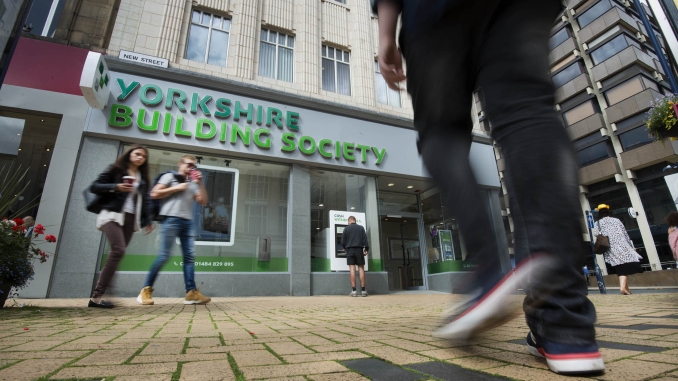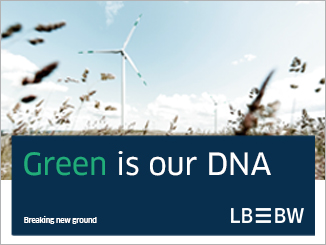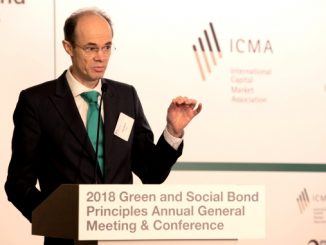
A €500m seven year covered bond last month was the latest addition to social bond issuance inaugurated by Yorkshire Building Society (YBS) in May under the first such framework for a UK builder. Duncan Asker, director of treasury, and Richard Driver, head of financial structuring, at YBS told Sustainabonds’ Neil Day how the issuance carries the financial institutions’ “real help with real life” mantra into its funding.
You can download a pdf version of this article here.
Neil Day, Sustainabonds: You have “real help with real life” as a slogan: what should one understand from this about Yorkshire Building Society’s strategy and concrete activities?
Duncan Asker, Yorkshire Building Society: The backdrop to this is what’s branded internally as our Blueprint, which was relaunched a couple of years ago and is really the key to how we see ourselves operating. That’s where “real help with real life” originated from — trying to set a strategy that is aligned with us as a mutual, and then fitting that into what we actually do. Because, as you say, the key point here is that it’s all very well having a strapline, but it’s got to be underpinned with some concrete deliverables.
For us, there are three key pillars that underpin the strategy, which are: helping people find a place to call home — which is clearly fundamental to what a building society does; providing member value; and improving financial well-being. Those three components are really how the whole real help with real life strategy manifests itself.
Helping people find a place to call home is probably the direct link through to the social financing framework, given how we use the funding. We see this pillar as helping into a home those people for whom it’s perhaps more difficult to get a mortgage than it may be for others. This involves helping first time buyers, who may only have a small deposit and need a higher loan-to-value (LTV), people on low to medium incomes and complex incomes, etc. In the first half of the year, for example, we helped almost 10,000 first-time buyers to gain a new home. That underpins our purpose, because for some of those mortgages it was a little bit more complex to assess the quality and creditworthiness of the individual cases, and our business model enables us to do that. Another example is that earlier this year, in March, we were the first organisation to reintroduce 5% deposit mortgages. Again, our business model and our approach to operating enabled us to do that earlier than others because we have a personal touch to the underwriting capability. So those are examples of key components that underpin that first aspect.
The second one is providing member value. As a mutual, we have a big advantage over PLCs insofar as we don’t pay a dividend. The way that manifests itself is through what we call “member value”. And we do that by basically carrying enhanced rates on our savings products. We operate at a relatively strong cost to income ratio, and if you look at our half-year numbers, we’re doing very well in that regard compared to our peers. The way we’ve passed this value on to our members is via our savings rates. In this market, you’ll see institutions with very strong headline rates and then back book rates that are managed down over time to very low levels. However, we have — twice, in fact — increased the rates payable to our existing members on off-sale products. People who have been members for more than 12 months and have an off-sale product received 50bp or 55bp for instant access and restricted access products, respectively, which is significantly more than a lot of institutions offer on their new on-sale products. We see that as the right thing to do, because it’s rewarding those long-standing members for their loyalty, and it’s fully aligned with the providing member value pillar of the overall strategy.
This also fits in our work towards improving financial well-being. As you’re giving people better rates, then they’re able to get a bit more interest — clearly it’s not huge when you look at the rates available, but the rates are certainly going to be better than for some of the big high street banks and encourages a savings habit. We’ve also introduced a number of member-only loyalty products. We’ve had a regular saver product out there and an ISA, for example, which are products that help people build a savings balance, build that financial well-being and financial resilience. And this actually brings in more balances, because people realise that being a member does bring true value. In the first half of the year, our members opened an additional 75,000 of those loyalty accounts, which is a pretty strong performance.
So we see real help with real life coming through in a variety of different ways. There are some other areas that are more difficult to measure in terms of direct financial metrics — our branch footprint, for example. We still see branches as a key distribution channel that our customers want to use, so we have a national distribution channel through our branch network, which a lot of institutions have been cutting significantly.
All in all, that’s where we see those key aspects of our strategy coming through in terms of tangible deliverables.
Day, Sustainabonds: How does the social bond framework fit into and further this?
Asker, YBS: For us, it’s that alignment to our purpose. Being able to demonstrate that what we are doing is having a positive social impact is important to us. We’re not out there to maximise profit. We have a profit level that we need to maintain financial strength, generate capital and re-invest for the benefit of our membership as a whole, and to support our credit rating. But we don’t see the need to do anything more than that. We think that being able to align across as many activities as possible will demonstrate how important the social aspect of what we do as an organisation is, and we saw no reason why our wholesale funding programme wouldn’t also be able to do this — indeed, the social bond framework fits nicely with what we do as an organisation.
Day, Sustainabonds: How did you go about selecting the eligible categories?
Asker, YBS (pictured): It was pretty straightforward. The nice thing about it was that we label the lending that we want to try and do under the overall banner of “purposeful lending”. Clearly the areas that we’ve captured under the social financing framework fit this — first-time buyers, self-employed, contractors, etc. The second party opinion provider was fully on board with what we put forward and we scored very strongly in that respect in their rating.
 One of the things we are mindful of is that this is an evolving area, and that’s why we think that you need to maintain some flexibility. What is considered a socially beneficial area of lending at the moment may evolve over time, and we may add new things to support what we call our purposeful lending agenda, and some things may come out. The reason we feel we’re doing something different is because we’re more active in parts of the market than some others are, so we are supporting a different part of the market, and you need to be alive to the possibility that these areas might change.
One of the things we are mindful of is that this is an evolving area, and that’s why we think that you need to maintain some flexibility. What is considered a socially beneficial area of lending at the moment may evolve over time, and we may add new things to support what we call our purposeful lending agenda, and some things may come out. The reason we feel we’re doing something different is because we’re more active in parts of the market than some others are, so we are supporting a different part of the market, and you need to be alive to the possibility that these areas might change.
We’ve already utilised the framework in different ways — we did an RMBS earlier in the year, and a senior non-preferred trade. So it’s getting good use and we are delivering the volumes to support the funding requirements.
Day, Sustainabonds: Your social covered bond is the first sustainable euro covered bond from any UK issuer, and more broadly you’ve been the most frequent UK issuer in euros in general against the backdrop of government funding schemes through the pandemic. What is the rationale for your relatively high level of activity?
Asker, YBS: There is indeed a lot of funding available. Obviously TFSME has just closed, but we’ve taken our share of that along with a lot of other institutions. The point for us, though, is that you can’t be in a position where that sort of funding is ultimately a structural component of your overall funding programme. Our strategy is therefore to make sure that ultimately TFSME is a non-structural component and create a diverse funding model. So we’re not reliant on government funding and we would never want to be, because that’s not sustainable. Our strategy is basically: let’s keep the retail deposit-raising engine working in an efficient way, supporting and providing the best value we can to our members and delivering a good quality deposit base in the retail space; and on the wholesale side, it’s the same thing, keeping the franchise well and truly alive in all the core funding markets, making sure we support the liquidity in those markets where we can — although clearly in the SNP space we’ll issue less frequently than the other programmes. We offer the market size and decent curves, and on the back of that create good engagement with our investor base so that they know who we are. Then, as and when we need to flex the volume of wholesale funding that we’re doing, we’ve built a good franchise that can support that, and I think it works well, as we’ve seen from the trades we’ve done this year. The covered bond was a great example, with good engagement from the investor base around the social framework.
We view keeping the funding programmes active in the way that we do as an investment in the long term sustainability of the organisation rather than as a cost, which is perhaps how some other organisations might see it. We think that’s a bit short-sighted. We definitely see it as value-creating in the long term.
Day, Sustainabonds: There’s a lot of talk about increased bank issuance in the new year, as central bank funding schemes continue to be withdrawn, and we’ve already seen greater activity from some regions. When you did the covered bond, for example, were you mindful of this and the fact that it might be better to come sooner than later?
Asker, YBS: We have a general strategy around regular issuance — we like to think we’ll be active in the programmes every 12 to 18 months — but we don’t have set dates. And through the way we’ve managed our government funding and also the retail and wholesale programmes, we have created flexibility, such that we have no pressing need to go to the market at any particular time — we will go when we think the market conditions are right. We’ve done that through this year, where we’ve quite happily turned around and said, “You know what? It’s not looking as good as it could do right now, so we’re just going to hold off a little bit.” I don’t ever want to be in a place where we are forced into issuing. The same applies for next year. We like to have it so it’s a good time for both us and investors. And if there’s too much issuance coming at the same time, I imagine that’s not great for investors, either, just because of capacity issues.
Day, Sustainabonds: The pandemic plays through into many of aspects of the market — government funding, the increasing focus on social, etc — but how has it impacted your cover pool? House prices haven’t necessarily done what was expected in the UK.
Asker, YBS: Everybody’s been somewhat surprised by how the economy’s performed over the pandemic — you only have to look at what the rate environment is looking like at the moment, with inflation expectations driving potential bank rate changes, etc. For us, the overall credit performance on the book has been very, very good. Along with most other people, we put some relatively pessimistic economic scenarios into our modelling — we were expecting falling house prices and rising unemployment. What we’ve actually seen is very different to that. Across the UK, house price performance has been pretty stellar. We are now starting to see a little bit of normalisation, following the end of the stamp duty moratorium, but in terms of the overall performance on the book from an arrears perspective, it’s remaining very strong. Looking at the three month arrears by value numbers, they are, if not at historical lows, certainly close to them. In the half year results, three month arrears by value were 40bp and by volume 56bp. And we’re also significantly better than the rest of the market: the UK Finance average three month arrears by volume was about 85bp. That plays through into the cover pool, too. So, at the moment we’re certainly seeing no reasons for concern. With the end of furlough, everybody’s been a little bit on the edge of their seats in terms of how unemployment is going to play out and ultimately what the Bank does in December, but so far, it doesn’t look like there’s going to be any sort of shocks in that space.
Day, Sustainabonds: How satisfied were you in how the social covered bond was received in terms of the execution, pricing and distribution?
Asker, YBS: We were very pleased. With the JLMs, we chose a good window to go ahead with the deal. We did have in our minds a target of sub-10bp versus mid-swaps, and it was really nice for us to come in at 9bp. And the way it’s performed has probably been well received by the market, too. We had a good bookbuild, ending up around 2.7 or so times oversubscribed, which was a great outcome. The other thing that was good to see was the significant number of investors from the ESG space who were involved, dedicated funds and those active in the green and social market — we had around 40%-45% who were categorised as ESG investors. That goes towards justifying the work we did to put the framework in place. So we walked away very happy and hopefully the investors did, too.
Day, Sustainabonds: You mentioned you’ve done the RMBS and senior issuance in social format earlier this year, and you’ve also done both sterling and euros. How prevalent through your funding is social going to be? And are there instruments or markets where you see it as more important, or where there is more value, for example in terms of greenium?
Asker, YBS: I don’t think we had any particular view one way or the other with respect to the different instruments and markets, to be honest. It’s more about the overall point that this is funding for a purpose-led organisation that’s having a positive social impact by using the funding to help people find a place to call home. We wouldn’t not proceed with a particular deal because, for example, we don’t think it’s going to give us a benefit from a pricing perspective. The social issuance is aligned with our strategy to be a socially responsible business and our wholesale funding should fit in with that, so we’ll keep targeting it under the social financing framework.
 Richard Driver, YBS (pictured): It’s perhaps worth reiterating that our framework is by design very flexible. It ranges across RMBS, covered and senior notes, all of which can and have been issued under the framework — and that’s deliberate. It’s a use of funding situation and we believe very, very strongly in that. We try to, in some ways, decouple the framework from the underlying cover pools, for both RMBS and covered bonds. You could argue that we’re being doubly social by utilising non-social lending, if you like, to facilitate cost-effective funding for genuinely social purposes. So that’s the kind of cornerstone of the framework that we’ve got, and something that we hope to continue with.
Richard Driver, YBS (pictured): It’s perhaps worth reiterating that our framework is by design very flexible. It ranges across RMBS, covered and senior notes, all of which can and have been issued under the framework — and that’s deliberate. It’s a use of funding situation and we believe very, very strongly in that. We try to, in some ways, decouple the framework from the underlying cover pools, for both RMBS and covered bonds. You could argue that we’re being doubly social by utilising non-social lending, if you like, to facilitate cost-effective funding for genuinely social purposes. So that’s the kind of cornerstone of the framework that we’ve got, and something that we hope to continue with.
Asker, YBS: The next step is, where do we take it from here? Because I do think that the whole ESG wholesale issuance area is a very fast-developing area. We have had talks internally about sustainability-linked bonds using an EPC rating, for example, green bonds, etc, and these are ongoing. It might be that we start bringing different aspects in from an ESG perspective, dependent upon what we feel is the right thing to do at the time. So it’s something that I expect will evolve.
Day, Sustainabonds: Regarding sustainability being a fast-moving area, it is on the regulatory side, too, with climate stress tests, greater disclosure requirements and the like. Is that something that is also driving the importance of sustainability for you?
Asker, YBS: We have indeed got some very big pieces of work underway to keep up with the regulatory agenda, but also our own agenda, because you don’t need to wait for the regulator to tell you to do the right thing — you need to be always thinking about it yourselves as an organisation.
Sustainabonds conducts all research and writing independently to maintain the full editorial integrity of the publication.
As a supporter of Sustainabonds, LBBW is facilitating a series of interviews with leading players in ESG and the green, social and sustainability bond markets.




